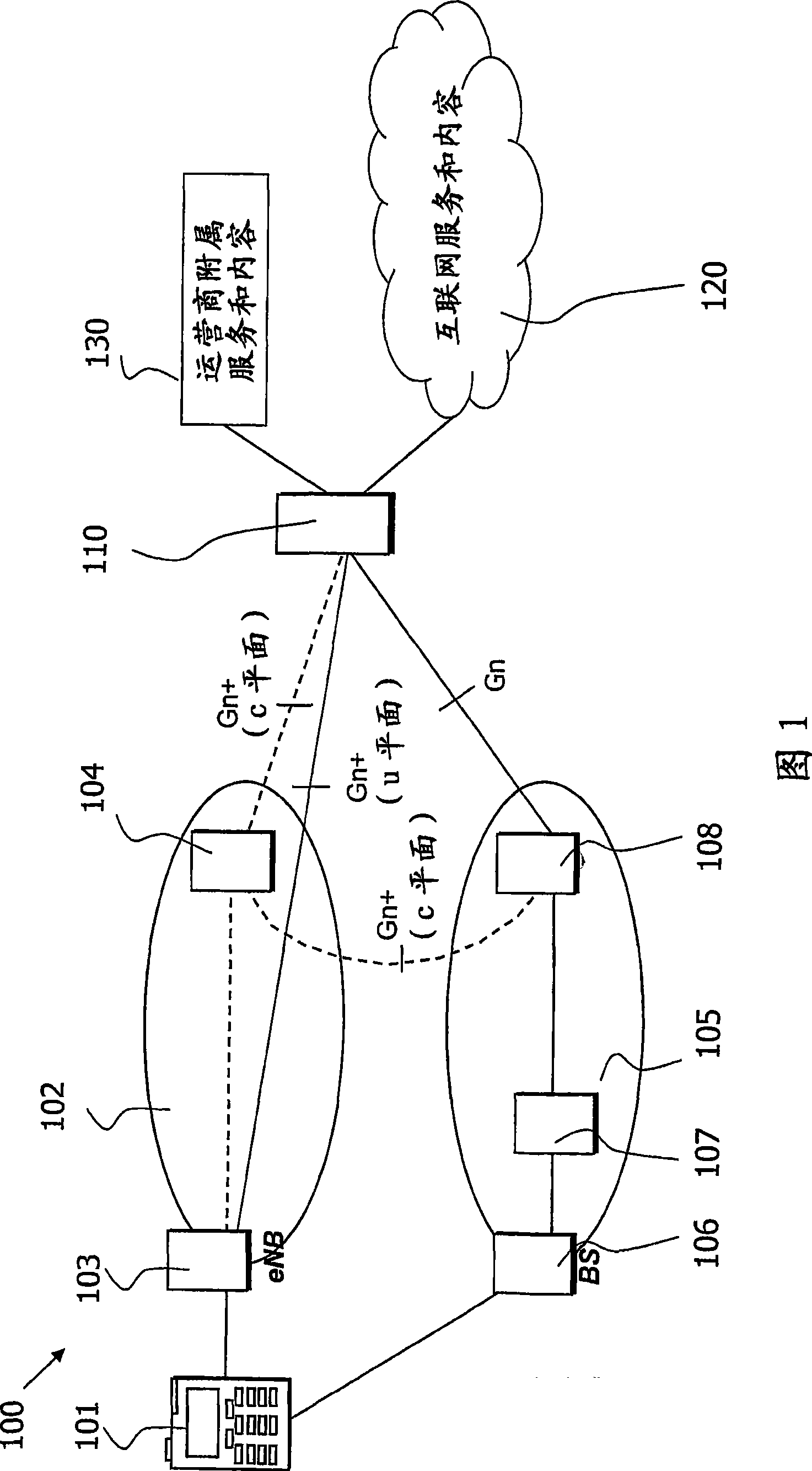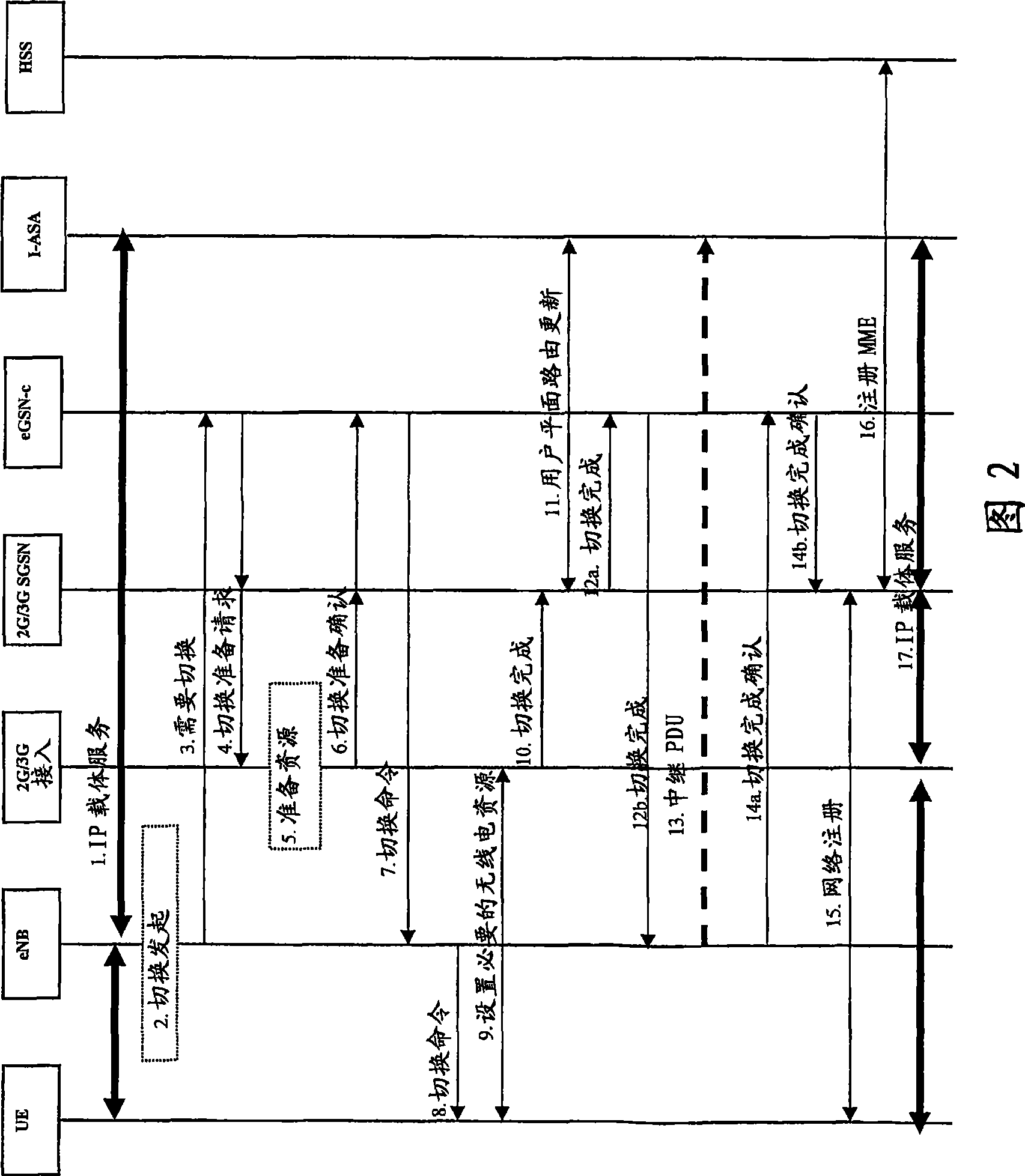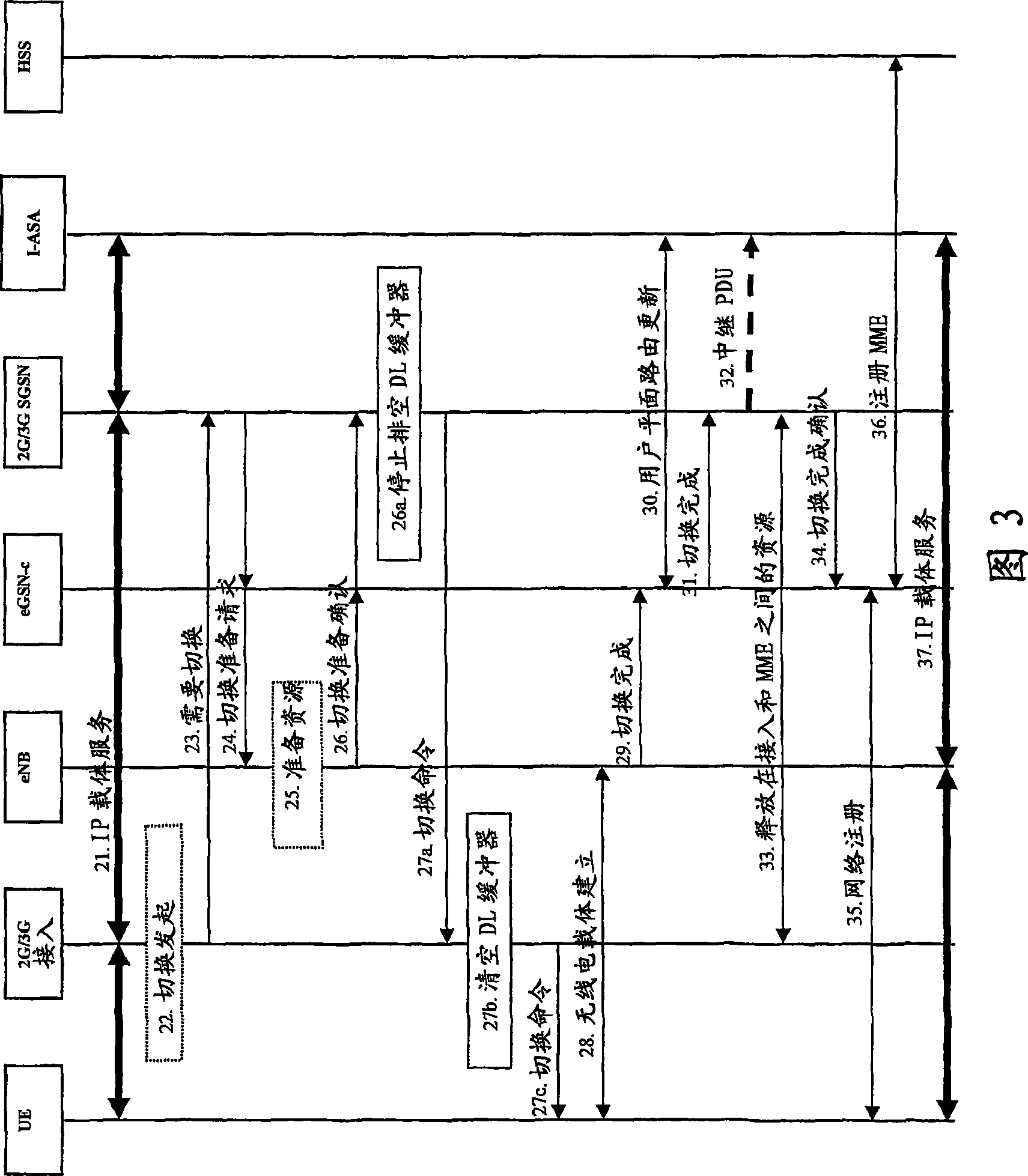Handover in communication networks
A technology of source network and target network, which is applied in the direction of wireless communication, electrical components, radio/inductive link selection arrangement, etc., to achieve the effect of reducing effective throughput, avoiding ping-pong effect, and avoiding packet loss
- Summary
- Abstract
- Description
- Claims
- Application Information
AI Technical Summary
Problems solved by technology
Method used
Image
Examples
Embodiment Construction
[0033] Referring to Fig. 1, Fig. 1 shows an example of a scenario in which the present invention may be used, namely a cellular telecommunication system 100 providing packet-switched services to a mobile node 101 . The mobile node 101 may access services provided by a data network 120 (eg, the Internet) and / or at least one network operator 130 . The communication system may include a 3GPP Long Term Evolution (LTE) access network 102 and a 2G / 3G access network 105 (eg, a 3G Universal Mobile Telecommunications System (UMTS) network).
[0034] In a mobile communication system, a mobile node 101, such as a mobile station (MS), is enabled to communicate with a base station (transceiver) (BS) 106 of a 2G / 3G access network 105 and / or with an evolved Node B (eNB) 103 (ie the base station of the LTE access system) communicate in the corresponding wireless connection. Each base station has a radio transceiver capable of transmitting radio signals in the downlink (DL) to mobile stations...
PUM
 Login to View More
Login to View More Abstract
Description
Claims
Application Information
 Login to View More
Login to View More - R&D
- Intellectual Property
- Life Sciences
- Materials
- Tech Scout
- Unparalleled Data Quality
- Higher Quality Content
- 60% Fewer Hallucinations
Browse by: Latest US Patents, China's latest patents, Technical Efficacy Thesaurus, Application Domain, Technology Topic, Popular Technical Reports.
© 2025 PatSnap. All rights reserved.Legal|Privacy policy|Modern Slavery Act Transparency Statement|Sitemap|About US| Contact US: help@patsnap.com



